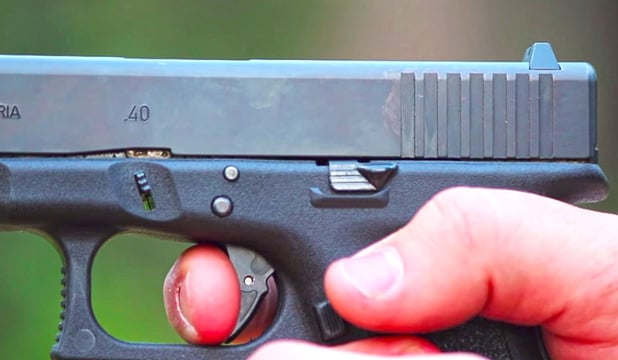What constitutes ‘ready’ anyway? Is simply having your firearm with a chambered round on your hip enough?
When I see the following steps taken, it drives me up the wall.
1. Buy a new firearm for concealed carry
2. Immediately start carrying that firearm
One of my friends has had his concealed carry permit for a little over 6 months. When he first got it, he had asked me for some recommendations for a firearm. After going over some great options, he landed on the Glock 23.
I ran into this friend a month ago at a coffee shop and we started talking about how his G23 was, and if he thinks it was a good choice for him. His response was unsettling and annoying.
“It’s been great, man. I haven’t really taken it to the range yet, but it feels really nice in the holster… feels like I don’t even have a gun on me!”
Do you see the problem? If not, read his response above again and go over it a few times in your head.
Are we on the same page yet?
When we decide to carry a firearm for self-defense, we’re doing so to make us even more prepared than we previously were. Here is a perfect definition of not being prepared: carrying a firearm around that you have never fired.
Unacceptable in my book.
The problem here is multi-layered. Not only is he not proficient with his G23, he also hasn’t made certain that the firearm functions properly. Hiccups happen, and some firearms even have ‘break-in’ periods. As a rule of thumb, for myself, none of my new firearms are worthy of carrying until they’ve fired 500 rounds without any issues. And I mean without any issues.
Here’s the argument that tends to rear it’s ugly head: “Well at least he’s carrying a firearm, amirite?”
I disagree, and I disagree strongly. On the off chance that he has to draw his firearm in self-defense and is forced to pull the trigger, what if the firearm has a malfunction? Sure, a malfunction can happen with any firearm at anytime, but it makes it that much worse if the firearm hasn’t been tested out… because it could have been a resolved issue. Plus, how can he be confident that he can clear a malfunction when he doesn’t have any experience with that particular firearm?
It all boils down to one thing: being a responsible concealed carrier. And a responsible concealed carrrier would not carry a firearm that hasn’t been put through it’s paces. That’s being irresponsible.
What if my friend happened upon an armed robbery and then drew his firearm, only to find that it’s jammed? Then, the bad guy shoots him and his victim. No, it’s not likely to happen, but that’s a hell of a bad position to put yourself and others in just because you couldn’t take the time to practice with that firearm at the range while making sure it functions as it’s intended. The whole concept of carrying for self-defense has just been thrown out the window.
As a citizen carrying a firearm, you need to be confident in two things: yourself and your firearm. If you’re not confident in both, you need to get there before carrying that firearm.














